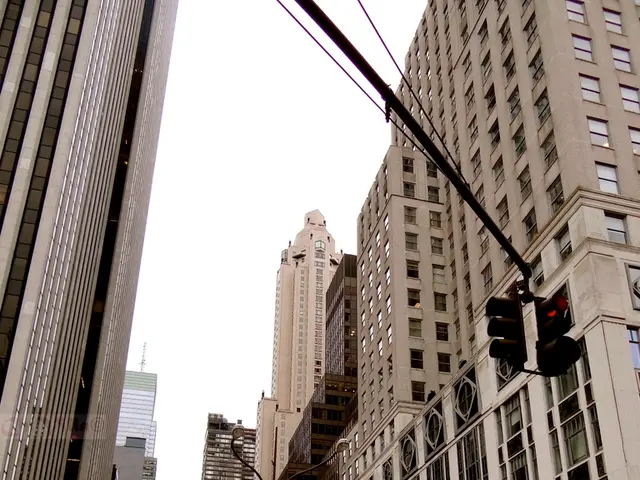Creating an Environmentally-Conscious Home: Designing an Eco-Friendly Dwelling Suitable for Every Age Group
======================================================================================
In today's world, many homeowners are looking for ways to make their living spaces more sustainable and eco-friendly. But what about ensuring that these homes are safe and accessible for people of all ages and abilities? This article explores the overlap between sustainable design and safety, showcasing a range of design choices that cater to both.
One of the most significant benefits of adopting sustainable design principles is the energy savings they offer. For instance, replacing old light bulbs with LED alternatives not only saves energy but also improves brightness in key areas. Smart home devices, such as timers for lights and smart thermostats, can further cut down on energy use.
But sustainability extends beyond energy efficiency. Energy-efficient windows with low-emissivity coatings maintain temperature stability without sacrificing natural brightness. Indoor plants like peace lilies, spider plants, and snake plants filter out toxins from the air and create a calming atmosphere.
When it comes to safety, designing a green-friendly home is about making thoughtful decisions that benefit both the people inside and the planet outside. Barrier-free, accessible entrances and pathways, featuring gentle ramps, wider doorways, and slip-resistant surfaces, support mobility and prevent falls while using eco-friendly, durable materials.
Open floor plans and flexible living spaces allow easy movement for people using mobility aids and foster adaptable, long-lasting functionality with fewer renovations. Safe bathroom solutions such as walk-in showers, grab bars, comfort-height fixtures, non-slip flooring, and handheld showerheads reduce the risk of injury and support independence, designed with materials that have low environmental impact.
Adjustable, ergonomic kitchen features like pull-out shelves, countertops at varying heights, and induction cooktops enhance safety and accessibility while reducing energy consumption. The use of natural and biophilic design elements, such as preserved moss walls and gardens, creates calming, sensory-friendly environments supporting neurodiversity and well-being, which also contribute to sustainability through low maintenance and resource use.
Incorporating smart home technologies, including voice-activated controls and automated lighting, improves accessibility and energy efficiency concurrently. Lighting choices that are bright yet glare-free and use energy-efficient bulbs enhance visibility and reduce falls, while lowering energy consumption.
Outdoor design elements like smooth, level pathways, shaded seating, and raised garden beds built with sustainable materials promote safe navigation and engagement with nature for all ages.
These design features highlight how universal design principles complemented by sustainable materials and energy-efficient technologies enable homes that are eco-friendly, safe, and accessible for people of all ages and abilities. This integrated approach not only protects residents but also reduces environmental impact, creating healthier and more inclusive living spaces.
For those interested in embracing sustainable design principles, resources like Greener Ideal provide green living tips and commentary on the latest environment news. Eco-conscious homeowners are also turning to custom metal railings and furniture for their blend of sustainability, durability, and design versatility. Adding indoor mats made from recycled fibers reduces slipping and keeps dirt from entering the home.
By making thoughtful, sustainable design choices, homeowners can create living spaces that are not only eco-friendly but also safe and accessible for all.
Read also:
- Urgent investment: Province funds 5.3 million dollars for expanding primary care in Elgin-Middlesex-London area
- Federal Environmental Protection Agency under scrutiny for alleged manipulation of soil sample results following East Palestine catastrophe
- Colon Cancer Genetic Testing: Insights into its Function, Application, and Additional Details
- RFK Jr. Takes Bold Step in Vaccine Research Development, Possibly Poseing a Threat to Public Safety








